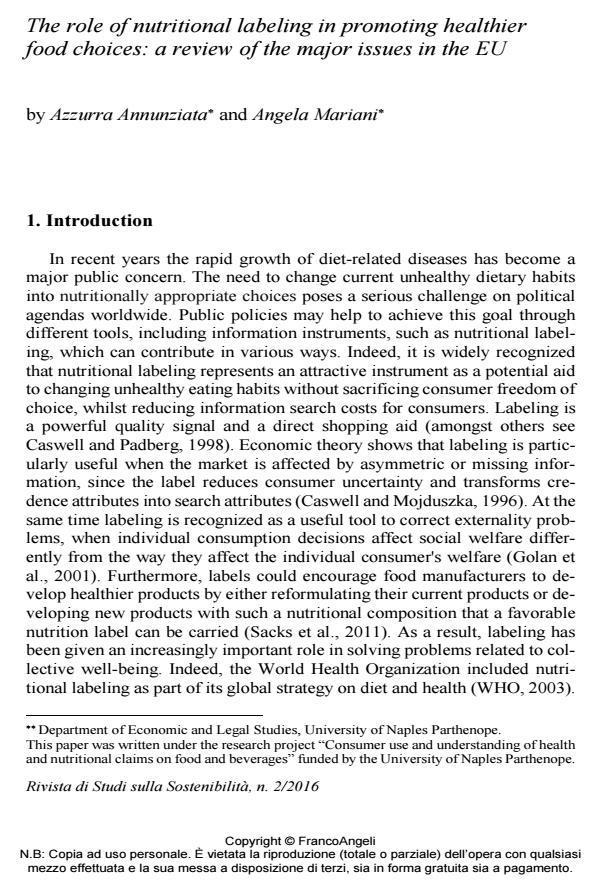The role of nutritional labeling in promoting healthier food choices: a review of the major issues in the EU
Titolo Rivista RIVISTA DI STUDI SULLA SOSTENIBILITA'
Autori/Curatori Azzurra Annunziata, Angela Mariani
Anno di pubblicazione 2017 Fascicolo 2016/2
Lingua Inglese Numero pagine 13 P. 107-119 Dimensione file 166 KB
DOI 10.3280/RISS2016-002010
Il DOI è il codice a barre della proprietà intellettuale: per saperne di più
clicca qui
Qui sotto puoi vedere in anteprima la prima pagina di questo articolo.
Se questo articolo ti interessa, lo puoi acquistare (e scaricare in formato pdf) seguendo le facili indicazioni per acquistare il download credit. Acquista Download Credits per scaricare questo Articolo in formato PDF

FrancoAngeli è membro della Publishers International Linking Association, Inc (PILA)associazione indipendente e non profit per facilitare (attraverso i servizi tecnologici implementati da CrossRef.org) l’accesso degli studiosi ai contenuti digitali nelle pubblicazioni professionali e scientifiche
As the widespread rapid growth of diet-related diseases becomes a major public concern, nutritional labeling is increasingly considered a potential tool to support the goal of changing unhealthy eating habits while retaining consumer freedom of choice. This paper aims to contribute to the institutional debate on the effectiveness of nutritional labeling on the back or front of packaging in promoting healthier food choices, focusing on the EU. The major issues detected and discussed are based on a literature review of recent studies that have examined the limits and potentials of such tools. Finally, we discuss other promising application fields of nutritional labeling, such as on alcoholic beverages and restaurant menus, and present some directions for further research.
La rapida diffusione di malattie non trasmissibili è diventa una preoccupazione prioritaria nell’agenda delle autorità pubbliche. Il presente lavoro si propone di contribuire al dibattito istituzionale sulla efficacia dell'etichetta nutrizionale posta, con diversi formati, sulla parte posteriore o anteriore della confezione dei prodotti nella promozione di scelte alimentari più salutari, concentrandosi sull’UE. I principali temi analizzati sono basati su una rassegna degli studi recenti che hanno esaminato i limiti e le potenzialità di tale strumento. Infine, sono discussi altri campi di applicazione dell'etichettata nutrizionale di particolare rilevanza, in particolare per le bevande alcoliche e i menu dei ristoranti, e sono individuate alcune direzioni per ulteriori ricerche.
Parole chiave:Scelte alimentari, etichetta nutrizionale, logo qualità nutrizionali, etichette a semaforo, Quantità giornaliere indicative (GDAs), politiche UE.
Azzurra Annunziata, Angela Mariani, The role of nutritional labeling in promoting healthier food choices: a review of the major issues in the EU in "RIVISTA DI STUDI SULLA SOSTENIBILITA'" 2/2016, pp 107-119, DOI: 10.3280/RISS2016-002010